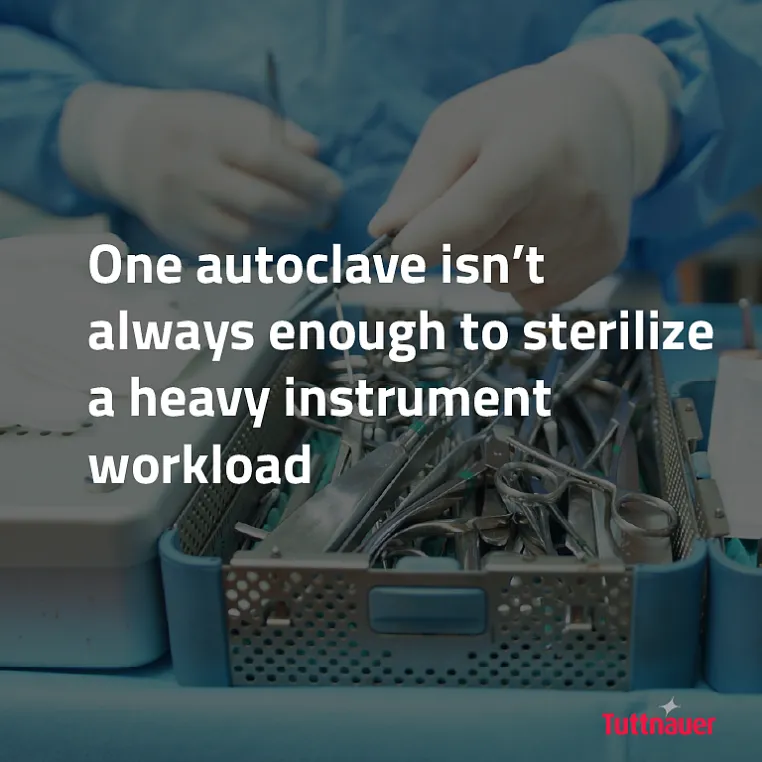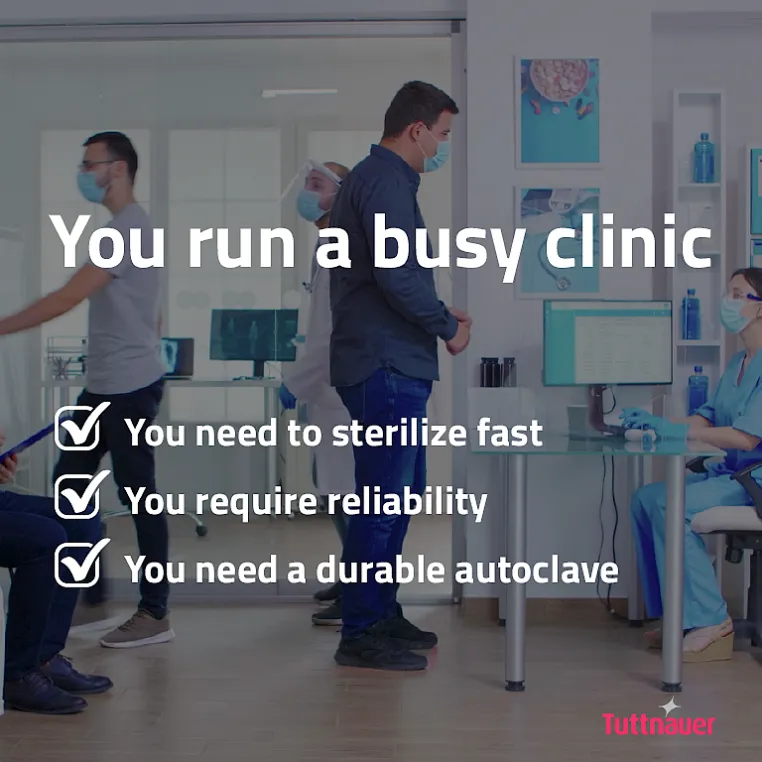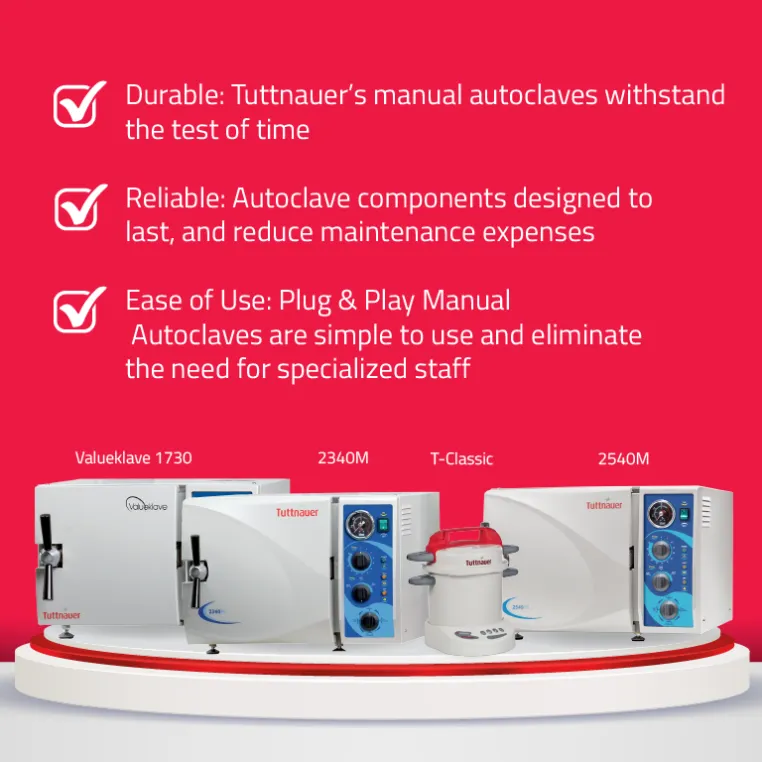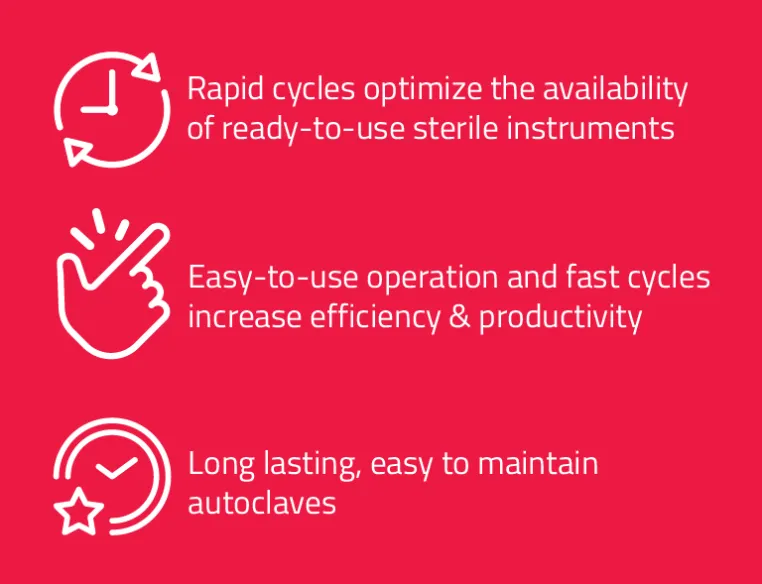Typically, dental clinics do not have enough instruments to get through an entire day of seeing patients. Which means on busy days, the clinical team must efficiently perform sterilization protocols to keep instruments moving and ready to use for the next patient. This can lead to frustration and unnecessary stress on the clinical team. Should the availability of sterile instruments fail to keep up with the surge of patients, clinics may run late or potentially not follow through with sterilization procedures in an effort to get the instruments faster, resulting in delayed patient intake or even appointment cancellations.
Dental offices often tend to overload the autoclave to deal with bottlenecks in the instrument processing area and ensure quick turnover of reusable instruments so they can continue seeing patients. This is very common, as we tend to think these loads would be sterilized, as long as they completed a sterilization cycle in an autoclave. Unfortunately, this is not the case. “Do not overload the autoclave” is usually found in autoclave procedures and manuals. So why do we still do it?

Why you should not overload your autoclave?
Overloading the office autoclave is a frequent conversation I have with clinical team members as it can cause insufficient sterilization of the entire load of instruments. Overloading the autoclave can result in even more severe delays, leaving staff members frantic and flustered.
Moreover, it can result in unsterilized instruments risking patients’ safety and potentially expose clinics to liability issues.
Doing so can also damage your machine in the long run and/or reduce its lifetime. This entails more costs for repairs and frequent downtime, which will ultimately be bad for your business and reputation.

Why you need a backup manual autoclave?
If your office is experiencing more traffic than usual, having an additional autoclave as a backup will help your clinical team to avoid overloading the primary autoclave, and to cause avoidable issues and frustrations. Of course, this means an additional expense for the clinic, but your practice and your employees will maintain standards and workflow, even on hectic days. In addition, you can ensure that all your tools and instruments undergo sufficient sterilization to avoid potential infection control breaches.
Consider a manual autoclave if budget is a concern. Cost-wise they are more affordable and will help you achieve the same results in sterilization. For instance, the Tuttnauer 2540M can handle high-volume labs and clinics where quick instrument turnaround is paramount. Its compact design is space-saving while packed with helpful features that make it fast, intuitive, and safe. So, if your practice does occasionally experience some busy days, the 2540M is an ideal solution.
The Tuttnauer 3870M can accommodate many instruments simultaneously while delivering optimal performance for more demanding offices. Its large capacity makes it suitable for practices or centers with multiple dental professionals.

With manual autoclaves, once the sterilizing cycle is complete, the operator must manually open the door to release the hot steam. Tuttnauer’s T-Quick Autoclave is a manual machine, it is designed with closed-door drying, allowing you to set it and forget it, quite literally. The machine sterilizes and dries without the need for supervision, perfect for busy staff who are handling several tasks at once. To better understand the easy use of the T-quick, watch this video https://www.youtube.com/watch?v=tk2BS70ZAek
Tips for maintaining your autoclave?
Remember to always label your instruments accordingly before sterilization so that everyone knows in which autoclave they were processed. This information is crucial, especially when there is an infection control breach. Additionally, both sterilizers will need adequate maintenance with proper record keeping. Even if the manual autoclave is only occasionally in operation, it must still undergo the same maintenance and monitoring procedures. For instance, a biological indicator or spore test must be performed at least once a week for every sterilizer to ensure optimal and effective sterilization.
If your dental office is experiencing more traffic than usual, purchasing a backup sterilizer can help operations to run smoothly, even on extremely busy days or if your primary one is on the blink. Think of it as an extra set of much needed helping hands that will thrive in high-pressure situations. Your staff, your patients, and your business will surely benefit!

